Report -
Economic Seminar Series 7
Japan - Making the Most of Current Tailwinds
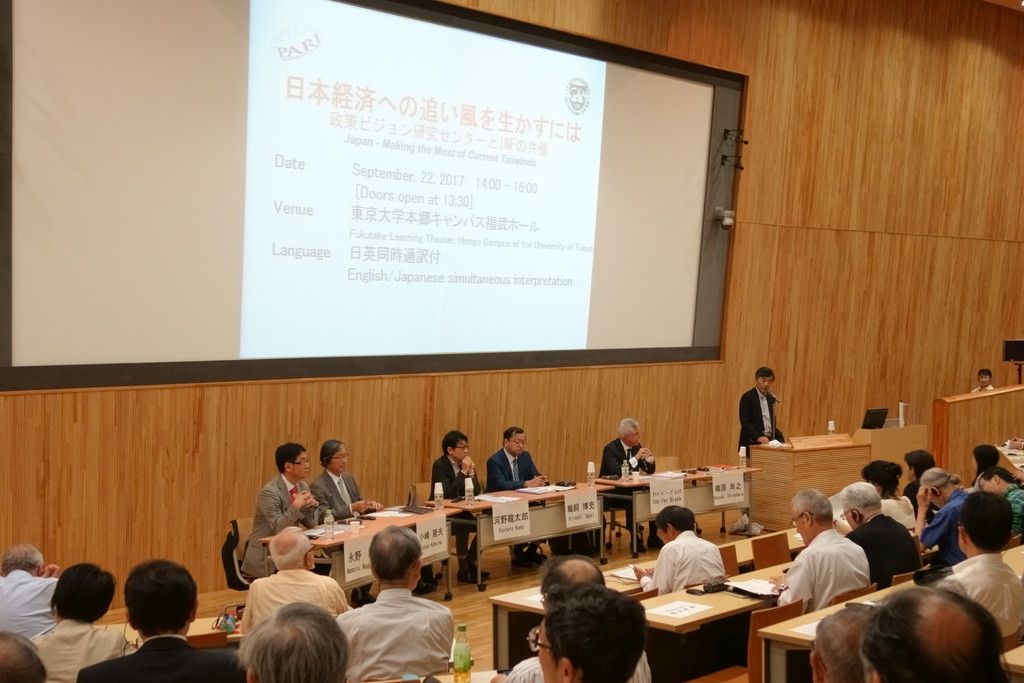
| [Date] | Friday, September 22, 2017, 14:00-16:00 |
|---|---|
| [Venue] | FUKUTAKE Learning Theater |
| [Co-organized by] |
Policy Alternatives Research Institute, the University of Tokyo (PARI) the IMF Regional Office for Asia and the Pacific (OAP) |
| [Language] | English / Japanese simultaneous interpretation |
Program
| 14:00-16:00 | Japan - Making the Most of Current Tailwinds |
|---|---|
| Speaker | Odd Per Brekk, Deputy Director, Asia and Pacific Department, Mission Chief for Japan AIV, IMF (Presentation Slides) |
| Panelists |
Hiroshi Ugai, Chief Economist, JPMorgan Securities (Presentation Slides)
Ryutaro Kono, Chief Economist, BNP Paribas (Presentation Slides)
Takao Komine, Professor, Department of Regional Development, Taisho University (Presentation Slides)
Mamoru Nagano, Professor, Faculty of Economics, Seikei University (Presentation Slides)
|
| Moderator | Naoyuki Shinohara, Professor, Policy Alternatives Research Institute (PARI), the University of Tokyo |
Report
This seminar was co-organized by Policy Alternatives Research Institute, University of Tokyo (PARI) and the Regional Office for Asia and the Pacific of the IMF. The current seminar is the seventh in the series of economic seminars. The first seminar was held in January last year.
Moderator: Naoyuki Shinohara
Professor at Policy Alternatives Research Institute
Professor Shinohara commenced by thanking the distinguished guests from IMF as well as other institutions. He then introduced Mr. Odd Per Brekk, who is the main speaker of this seminar.
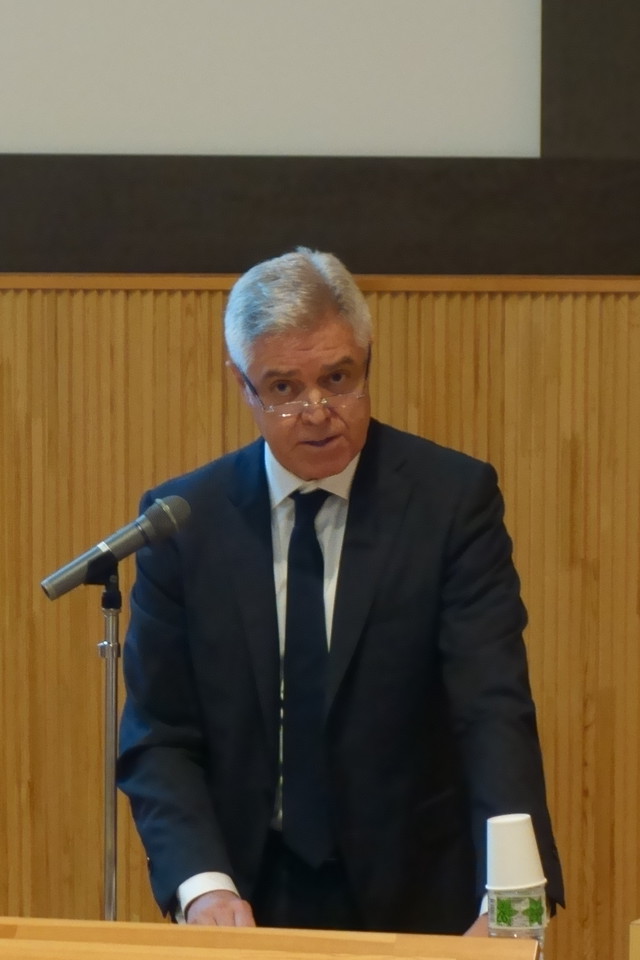
Mr. Brekk
Speaker: Odd Per Brekk
Deputy Director, Asia and Pacific Department, Mission Chief for Japan AIV, IMF
Mr. Brekk commenced by stating that IMF completed the annual "Article IV Consultation" with Japan earlier this year and also conducted the "Financial Sector Assessment Program." IMF conducts this FSAP exercise at least every 5 years for countries whose financial sectors are considered systemically important. The consultation reports are available on imf.org.
The Japanese economy is currently performing quite well compared to the perspective of last year's Article IV Consultation. GDP growth has been above potential for six quarters. The projected real GDP growth for 2017 is 1.3% as opposed to a projection for 2017 last year of 0.3%. The GDP numbers have recently come out better than expected, which means the risks are on the upside. More generally, there has been a positive trajectory of the Japanese economy under Abenomics. The national accounts were revised last year, and the average annual growth during Abenomics is now estimated at 1.2%, higher than the previous estimation of 0.6%, which is a result of higher consumption and high investment.
One reason for the positive development has been the supportive external environment, especially from the Asian region. On the fiscal side, the consumption tax increase was postponed. Also, there was a supplementary budget approved last year, which mainly has stimulative impact this year.
On the monetary policy side, the Bank of Japan moved to QQE with YCC, quantitative and qualitative easing with the yield curve control, which supplements the negative interest policy introduced early last year. He explained that these measures are combined with the stated commitment to overshoot the 2% inflation target, and deemphasize the quantitative target for JGB purchases. However, inflation and wage growth remain below targets in Japan, which is a central challenge for Abenomics.
Lastly, public debt remains unprecedentedly high. At the end of 2016, gross public debt was just under 240% of GDP, although net debt is lower. This is an unsustainable level of debt under current policies, requiring a policy response.
Regarding risks to the main scenario, upside risks could come from a supplementary budget for this year and the possibility of higher external demand stemming from higher global growth. On the other hand, downside risks could come from a sharp yen appreciation due to geopolitical instability, loss of confidence in domestic policies which could renew deflationary risks.
In the medium-term, fiscal sustainability concerns could lead to a rise in the sovereign risk premium, which may require abrupt fiscal adjustments and could have adverse effects on the financial system and the real economy. The threats of retreats from global cross-border integration could also affect Japan's open economy.
The main policy priorities of the Japanese authorities follow from the above observations. The theme for this year's Article IV Consultation was "Making The Most of Current Tailwinds Through a Mutually Reinforcing Strategy."
In brief, the positive short-term developments represent an opportunity to move ahead with more substantial structural reforms under Abenomics. Japan needs a mutually reinforcing strategy of fiscal and monetary support for demand, which should be complemented with labor market and income policies, as well as a medium-term strategy to promote growth and reduce the public debt burden.
Mr. Brekk suggested that Japan needs a well-designed specific and credible medium-term fiscal strategy to anchor policies and expectations, specification of concrete adjustment measures to get the needed fiscal adjustments done, both on the revenue as well as the expenditure side, as well as fiscal anchor.
He further stated that the third arrow of Abenomics, structural reforms, remains of central importance for achieving the objectives of Abenomics. In regard to prioritization of structural reforms, he highlighted:
- The highest priority is labor market reforms to boost wages in support of reflation and increased productivity, and create greater labor market flexibility. "Equal-pay for equal-work" initiative can be used to further eliminate the duality.
- Increasing private investment. This can be achieved by reducing barriers in specific sectors.
- Deeper corporate governance reform.
- Clearer macroeconomic policy frameworks and communication.
- Diversifying and enhancing the labor supply. Employers could place less emphasis on tenure and hours worked, and focus more on productivity and merit.
He stressed that financial sector policies can help strengthen productivity, including in the SME sector, which plays a large role in the Japanese economy. Lending to SMEs should be risk-based lending as opposed to lending based on fixed-asset collateral or personal guarantees.
Further recommendations in the FSAP report include enhanced supervision and governance to keep pace with the increasingly sophisticated activities across the financial institutions and to improve the risk-management capacity. Japan also needs to enhance systemic or system-risk oversight. This would include addressing specific sector risks such as housing. Japan's demographic transition, especially aging, and the associated low-interest rate environment pose new risks for the financial system, which the authorities need to keep an eye on.
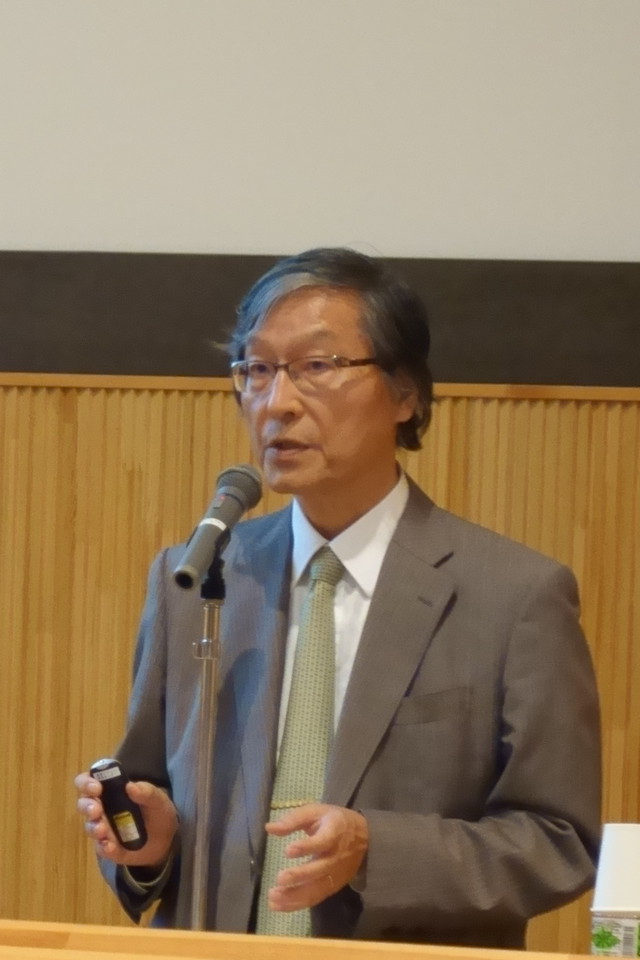
Prof. Komine
Speaker: Takao Komine
Professor, Department of Regional Development, Taisho University
Professor Komine began his presentation by speaking about the current long-term economic expansion of Japan, which consists of Phases 1, 2, and 3. He presented a comparison of the three long-term economic expansion periods. Phase 1 reflected the effects of Abenomics, especially depreciation of yen and the increase of public investment. There was a demand shift anticipating the increase of consumption tax rate. Phase 2 was the period of economic slowdown. Phase 3 is the economic revival period, which is continuing at present. In this phase, GDP-based real export increased 8% to 12% annually. Hence, it can be said that the impact of Abenomics was very much limited.
Professor Komine also presented a chart comparing the rate of inflation target and the actual rate of inflation. It demonstrates that the target of 2% was achieved only in the first six quarters; however, the actual inflation rate later started to decline and the discrepancies between the target and actual levels expanded. This trend is similar to the nominal GDP growth rate and real GDP growth rate.
In terms of future monetary policy management, the GDP gap and future development of Japanese business trends as a base of policy judgement needs to be considered.
He emphasized that Japan must change from the emergency experimental policies, which have been the main characteristics of Abenomics, to the traditional type of policies. The Japanese economy has already shifted from an over-capacity economy to an over-demand economy. Hence, Japan should switch to the productivity-enhancing policies especially focused on the labor shortage problems. Criticizing Abenomics, Professor Komine stated that the focus should be more on fiscal consolidation and social security reforms.
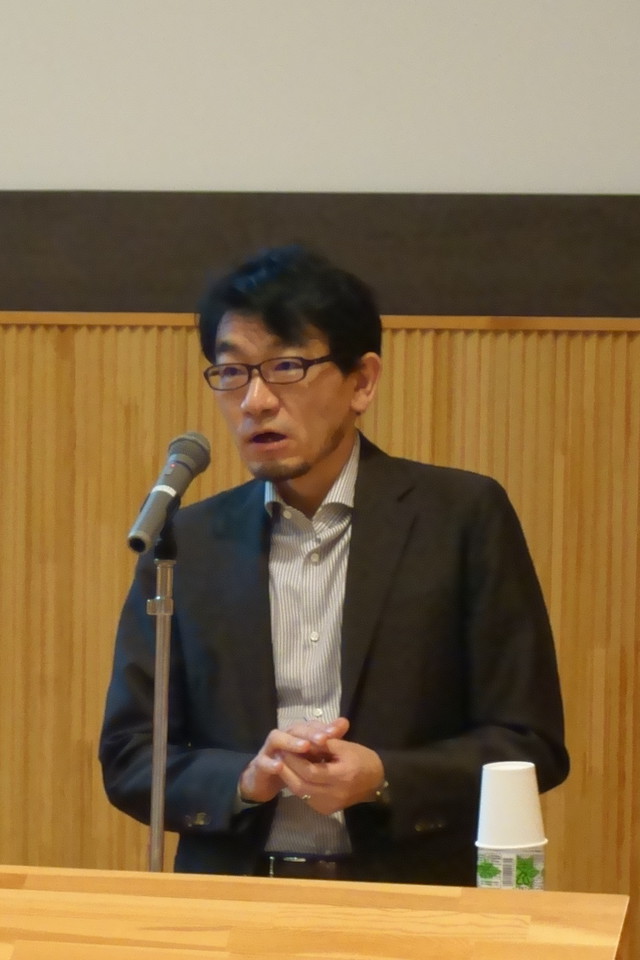
Mr. Kono
Speaker: Ryutaro Kono
Chief Economist (Japan), BNP Paribas
Mr. Kono expressed his concern over monetary and fiscal stimulus under full employment. The aggregate demand of the Japanese economy is doing all right. However, the labor shortage cannot be overlooked. Hence, Japan should start exiting the monetary and fiscal policies that stimulate aggregate demand.
He further mentioned that the current aggressive monetary and fiscal policies may adversely affect trend growth rate and natural rate of interest. So, the national economic welfare should not be compromised in the pursuit of achieving the 2% growth rate. If the natural rate of interest declines substantially, policy resources should be directed toward structural policies that can revive natural rate of interest and trend growth rate.
Further, Mr. Kono stated that the introduction of YCC has made monetary policy more sustainable; however, the risk of succumbing to fiscal dominance has also increased.
Mr. Kono demonstrated the three Phillips curves and other data in relation to the question of whether Abenomics and aggressive monetary easing influence inflation expectations, which was not the case in his opinion. He was also of the opinion that wage growth will not lead to higher inflation, stressing his point that even if wages pick up, it won't quickly result in price pass-through.
The downward shift of the wage Phillips curve was primarily due to declining productivity growth and labor share. So, it reflects falling inflation and weakness of real wage growth. Mr. Kono mentioned that inflation and wages are being restrained despite labour shortage as labour share continues to fall reflecting capital-biased innovation.
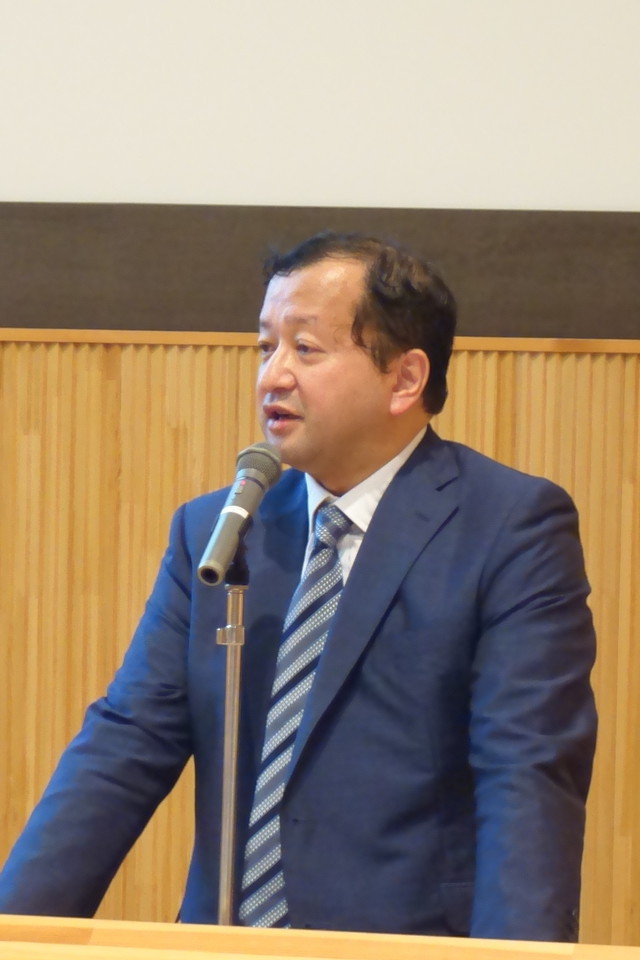
Mr. Ugai
Speaker: Hiroshi Ugai
Chief Economist, Managing Director, JP Morgan Securities Japan Co., Ltd
According to Mr. Ugai, Japan’s economic growth will continue to be strong, while inflation will accelerate very moderately. He said the shift from QQE to YCC has reinforced the sustainability of the monetary easing to a certain extent. When the CPI goes up to 1%, the BoJ might try to adjust the 10-year yield target. When the CPI goes up to 2%, the BoJ might start adjusting the overnight policy rate, which could be in 2022. BoJ's balance sheet will continue increasing but at a decelerated pace. Under this scenario, the market share of JGBs held by the BoJ, which is currently around 40%, will converge to 50% at best – 60%.
Mr. Ugai stated that the current monetary policy is aiming to get the Japanese economy in line with the sustainable growth and achieve the 2% inflation target.
If the 2% inflation seems difficult to achieve in the next few years, he feels that the BoJ should be patient with its approach, not to lower the target, and not to shift to a more stimulative approach. He discussed the reasons behind this view.
There is also a risk of recession before CPI reaches 2%, which will include US and Japan factors. Hence, the BoJ and the Japanese government must discuss policy measures against these foreseeable situations well in advance.
He also stressed that when the exit comes, the BoJ holding huge amount of JGBs will face difficullt challenges, the risk of financial repression and of incurring huge losses on the BoJ’s profits. This would threaten the BoJ’s independence.
He concluded with stating that it's not a good idea just to focus on the ideal monetary policy operations, but the comprehensive policy package in Japan is the most important aspect.
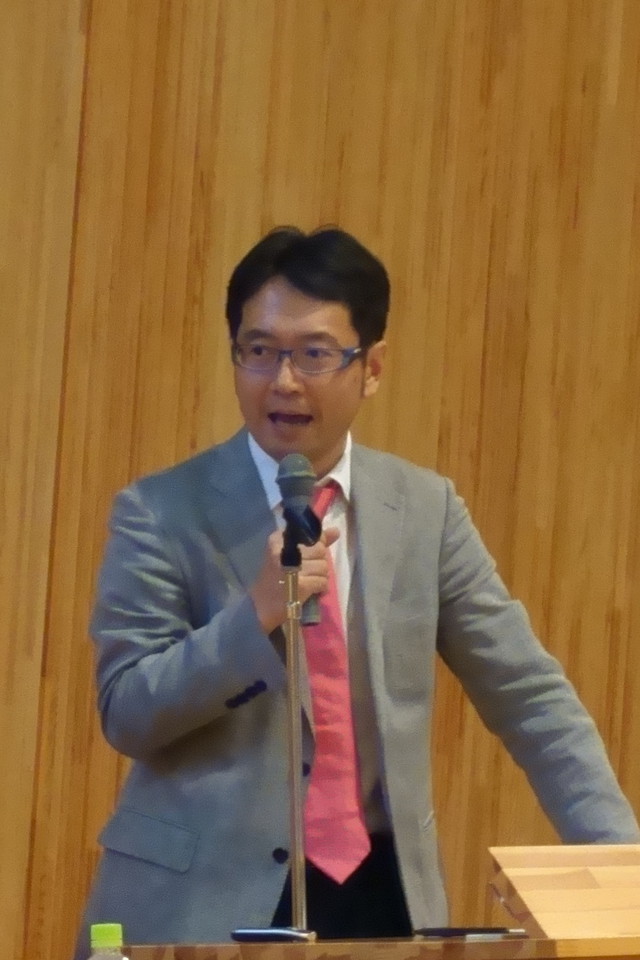
Mr. Nagano
Speaker: Mamoru Nagano
Professor, Faculty of Economics, Seikei University
Professor Nagano primarily focused on three major points by overviewing the IMF financial stability report.
- He agrees with the view of IMF that long-term unconventional easing monetary policy has deteriorated bank performance.
- He also agrees with the IMF report assertion that the Japanese financial supervisory agencies should strengthen bank surveillance or supervision to overcome future financial instability. Individual bank corporate governance should be strengthened.
- The IMF's report recommends strengthening the relationship between the bank and the borrowers. It recommends increasing the productivity of SME borrowers to improve bank performance.
Comments by Professor Nagano:
- The declining lending interest rates, loan and deposit interest rates margins have deteriorated bank performances, and the IMF is of the view that this could be possible future financial instability. Professor Nagano feels inter-regional bank branching by profitable banks will improve bank profitability, which will aid in overcoming future financial instabilities.
- In Japan, the size of non-interest income is much smaller than that of interest income as opposed to the United States. This needs to be improved.
- To increase non-interest income of banks, FinTech technology is one of the possibilities. Blockchain technology is a key technology for virtual coins such as Bitcoins and many commercial banks have tried to develop this technology to increase non-interest revenue. Artificial Intelligence is also an important technology.
- He believes that there should be encouragement for bank consolidation and profitable banks should make new entries in many areas where banks are not performing well.
- To overcome financial instability in the future, bank mergers and acquisitions would be necessary and inevitable.
Discussion
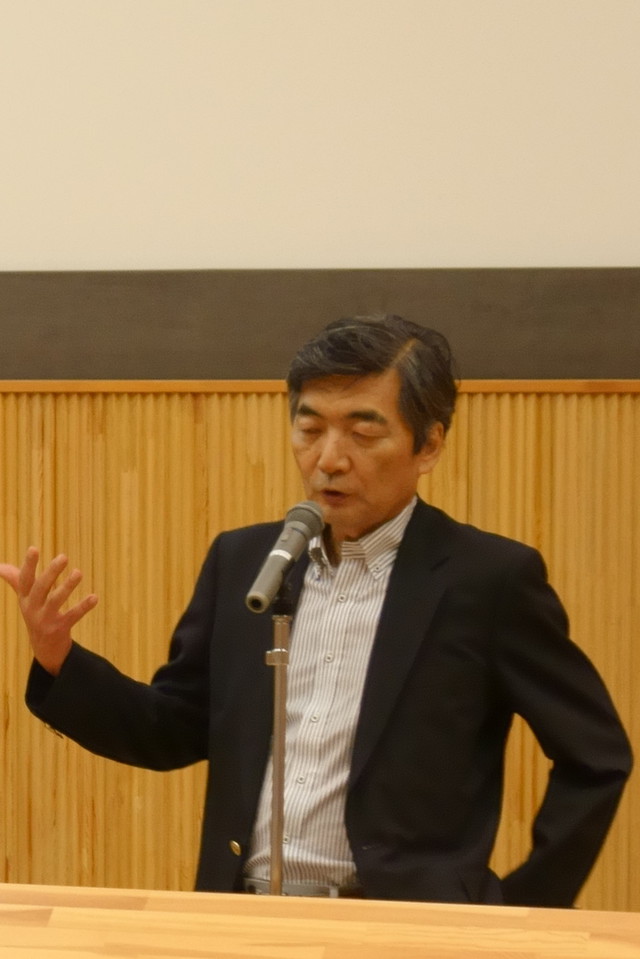
Prof. Shinohara
Facilitated by Professor Shinohara
Mr. Brekk noted, in response to the views of the panelists, that IMF has been supportive of Abenomics from the beginning because it is innovative and represents a coherent strategy. Abenomics is in a way an experiment, and is followed closely around the world. He stressed that the necessary fiscal consolidation needs to be done in a very gradual and cautious manner, being adjusted depending on the underlying economic condition. There is also a need to sequence the reforms very carefully and having support from the macroeconomic policies. Japan needs to have a coordinated policy approach to combat the long-term challenges for the banking system. The current environment could be used as an opportunity to put inflation on a sustained higher path.
Professor Shinohara invited views from all the panelists regarding the idea, by Prime Minister Abe, of using part of the consumption tax increase for free education of pre-school kids and college students. Traditionally, it was supposed to be used partly for increase in social security expenditure and the rest to be used for government debt reduction.
- Mr. Brekk shared the view of the IMF that a better strategy would be to raise the consumption tax by pre-committing to a smaller but gradual increase, such as 0.5% every year. This should be part of a credible medium-term fiscal adjustment.
- Professor Komine said it’s hard to agree with this idea. He said that, from the viewpoint of the government debt management, there’s a lot of room to revise the VAT; however, if the funds raised by doing so is used for making education free, it may deplete the sources for future repayment of the government debt.
- Mr. Kono opposed this idea. He agreed with the IMF’s suggestion of the incremental increase of VAT hike, which can minimize the negative impact on the economy.
- Mr. Ugai said it is hard to agree with the idea because using the funds raised from VAT hike would deplete the funds for future repayment of government debts. Aside from the funds, the value of free education depends on how this would raise the productivity and fertility rates.
- Professor Nagano said that hiking consumption tax is absolutely necessary and it should eventually be up to 15%.
Professor Shinohara invited views by the participants on the issue of the Bank of Japan not even wanting to talk about the exit strategy of monetary policy.
- Mr. Ugai observed that from accountability reasons the early disclosure should be justified, but actually the BoJ should choose the timing carefully to talk about exit strategy because the market might interpret this as the future or near-term tightening of the monetary policy. This might lead to some instability in the foreign exchange markets.
- Mr. Kono said that the exit will be easier if done before inflation revive.
- Professor Komine mentioned that the exit strategy should be discussed and implemented as soon as possible. But the BoJ is worried about the short-term market reaction if they do so.
- Mr. Brekk argued that monetary policy accommodation should continue until the inflation objective has been achieved. It is the right approach and a clear communication of this commitment would help affect inflation expectations.
A couple of participants from the floor asked whether the BoJ feels that its monetary policy will lead the Japanese economy in the correct direction and also enquired about the structural reforms. Several participants commented that the BOJ's 2% inflation target seems a little difficult to achieve.
- Mr. Brekk agreed that Japan faces serious headwinds from demographic trends, and the industrial structure is not flexible enough to accommodate the trend. However, he is optimistic about the Abenomics. The growth has been 1.2% on average, which is higher than previous administrations. The positive impact is still to be seen in wage inflation and in nominal GDP that is needed to help put the fiscal position on a sustainable basis. That said, he viewed that the economy is moving in the right direction.
- Mr. Ugai observed that massive quantitative easing does not lead to inflation quickly. BoJ must take a patient approach with YCC. 2% target is important because of a future room of monetary policy easing and avoidance of persistent depreciation pressure of the yen. Regarding structural reforms, since Japan is facing the problem of aging society, the Japanese government should look to widen the labor market reform, moving to increase the labor market mobility more. This will help increase the macroeconomic productivity.
There was also a question from the floor on how to respond to the deteriorating profitability of regional banks. Prof. Nagano stressed, among others, the importance of mergers among regional banks, considering the number of banks and overlapping of their branches.
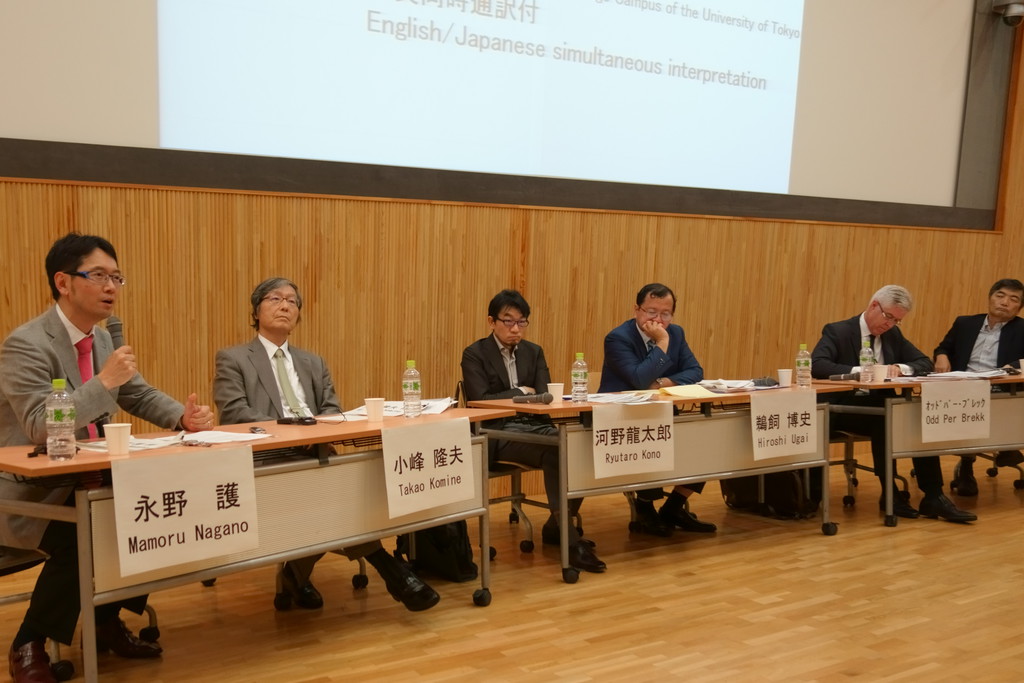
(note) The responsibility for the wording of this summary report lies with Professor Naoyuki Shinohara.


